In case your time is short
- Clarification of Terms: "Shared" NOC support involves resources working across multiple client environments but dedicated to one at a time, while "Dedicated" NOC support means resources are exclusively committed to a single client environment.
- Business Model Impact: Dedicated support is resource-dependent, fitting for environments requiring constant, dedicated attention. Shared support benefits from economies of scale, ideal for environments with fluctuating demands.
- Service Level Agreements (SLAs): Dedicated NOC can offer highly customized SLAs based on specific client needs, while shared NOC support provides standard SLA options applicable across multiple clients.
- Resource Allocation and Scalability: Dedicated support involves named, client-specific resources, limiting scalability to adding more resources. Shared support scales more flexibly to workload changes through a pool of resources.
- Integration and Delivery Platforms: Dedicated NOCs typically use client tools and runbooks, allowing for deeper integration into client-specific environments. Shared NOCs rely on their tools and standardized processes, offering extensive integration capabilities with client monitoring and ticketing systems.
- Supervision and Escalation Management: Dedicated NOC supervision is straightforward with team leads, while shared NOC requires a more complex management structure. Escalation management in shared NOCs can tap into a broader range of expertise compared to the self-contained dedicated NOC teams.
- Service Options and Customizability: Both models provide core NOC services, but dedicated NOCs can offer additional custom services tailored to specific client needs, such as server patch management and new service provisioning.
- Choosing the Right Model: Deciding between shared and dedicated NOC support involves evaluating each model's strengths in context with your organization's specific requirements, considering factors like volume of support activities, need for custom services, and cost-effectiveness.
When looking for outsourced Network Operations Center (NOC) support, the question of a shared versus dedicated service model often arises. Typically, a company looking to outsource their NOC operations wants to determine whether the support engineers are dedicated to the company or shared across multiple clients.
Often, deciding between a shared or dedicated support model is a matter of understanding exactly how much work the NOC needs to do. Sometimes the optimal model is more or less apparent when analyzing important metrics. Other times, several other factors need to be considered as well, such as company security requirements (security checks and clearances), knowledge of client-specific applications, and complex workflow capability, to name a few.
In some situations, the NOC team may need custom or ad-hoc support, which could strongly tip the scale in favor of the far more customizable dedicated model. Custom services might include provisioning of new services, verifying backup processes, and providing server patching support, among many others.
Here, we clearly define what “shared” and “dedicated” support mean in this context and identify 10 key differences between shared and dedicated NOC support to help you find the optimal model for your organization.
Read on for a summary of the significant points to consider when deciding between shared or dedicated NOC support.
Clarifying Terminology: “Shared” vs. “Dedicated”
A shared NOC resource—be it a person or tool—works in multiple client environments through assignments that commit them to a particular environment at any one time. A genuinely dedicated resource works solely in only one environment at all times.
These terms can get tricky when companies refer to shared resources as “dedicated” because they’re only working in one environment at any given point in time. While it’s true that these resources “dedicate” themselves to just one environment at a time, a better title for these resources might be “assigned.” A shared NOC engineer who works 40 hours a week may be assigned to two environments in total. In this example, they may work 20 hours a week in one environment and the other 20 hours in the other.
Again, genuinely dedicated NOC resources are devoted solely to one environment. They typically, but not always, use the client’s tools rather than their own. In general, everything outside of this precise definition of a dedicated resource is technically “shared” in nature.
Shared NOC Service
The shared NOC is a timely and reliable resource pool that is constantly triaging and working through queues containing tickets from many clients. This model is tailored to offer standardized and templatized support.
Here at INOC, our shared NOC is staffed with skilled NOC personnel, from tiered groups of engineers to change specialists and round-the-clock management. Once the systems to be monitored have been pointed at our infrastructure, we receive and ticket alerts, emails, and phone calls where they are triaged for severity and worked as our engineers move through the queue of shared client events. The engineers utilize INOC tools and alarm-to-action guides that are built off standardized support methods and adapted to fit the client’s business.
Through platform integrations, the shared NOC is highly scalable. Escalations are typically handled internally through the shift supervisors and managers.
Dedicated NOC Service
The dedicated NOC service model is a custom outsourced solution staffed by a team with named resources, specific skill sets, and a team lead who works in step with the client’s needs. Dedicated NOC resources handle issues from only one particular client or partner assigned to them.
At INOC, we work with our dedicated clients to determine the team’s specific requirements. The client or partner then provides the tools our staff uses, including hardware, access, and environmental training. The client then onboards our dedicated team directly into their environment.
Dedicated resources use the client’s existing monitoring and ticketing platform, runbooks, and alarm-to-action guides. This allows the team to be small but highly intimate. The service levels depend on the resources available in the dedicated team. Escalations are typically handled by the dedicated team and the client’s responsible party.
Shared vs. Dedicated Support: 10 Key Differences
The table below offers a broad overview of the differences between a shared and dedicated model. Read on to find expanded summaries for each of these points below.
NOC SERVICE DELIVERABLE |
DEDICATED NOC |
SHARED NOC |
|
Business Model |
Resource-based |
Asset and workload based, economies of scale |
|
Service Level Agreement |
Client defined, resource-dependent |
Standard options |
|
Delivery Resources |
Named resources |
Multiple teams |
|
Delivery Process |
Client-specific |
ITIL |
|
Delivery Platform |
Client tools and runbooks/knowledge base |
INOC tools |
|
Integration with Client Tools |
Limited or none |
Extensive integration with client monitoring, ticketing systems, and other tools. |
|
Scalability |
Resource-dependent |
Scalable |
|
Supervision |
Team Lead(s) |
Managers 24x7 |
|
Escalation Management |
Team Lead(s) and then client escalation tree |
INOC escalation in parallel with client escalation |
|
Service Options |
Event, Incident, Problem, Change, Request Management, custom services |
Event, Incident, Problem, Change, Request Management |
1. Business Model
As a service model, dedicated NOC support is inherently tied to the number of individuals on the team. Dedicated service is constrained by the resources available at any one time. If only one engineer is actively working at a certain time, the support at that time is limited to that engineer’s capacity. If he or she is faced with multiple issues at once, some of those issues will simply have to wait until others are addressed. Similarly, if a dedicated team is active only during some hours of the day, issues that occur outside those hours can’t be addressed until support resumes.
These constraints are acceptable for many companies, making the dedicated support a viable option. If, for whatever reason, issues become a frequent problem at a certain period of the day when resources either aren’t available or become overwhelmed, companies may choose to add an additional dedicated resource to handle that demand.
By contrast, the shared NOC support model enables organizations to benefit from economies of scale. Rather than being based on the number of resources, the shared support model is based on the number of assets (such as devices) and workload (the expected volume of NOC activity in a given period of time).
Here at INOC, our shared support model allows service to scale across a large team of shared resources to meet periods of expected or unexpected demand—a capability that simply wouldn’t be possible in a dedicated support arrangement. This group of shared resources is sized to ensure roughly 65% utilization to provide a safe buffer of capacity to handle unexpected spikes in activity. Using company-wide metrics, changes in utilization are reflected in staffing decisions to ensure this balance is always maintained.
When considering which model makes the most sense for your organization, it’s important to realize that, in general, the less that resources need to be utilized the entire time, the more a shared NOC support model typically makes sense economically. Depending on the resources currently being utilized in the NOC, it’s not until the work volume averages hundreds or more incidents a month that a dedicated team becomes necessary from a practical perspective and worth it financially. However, as we explore in the sections below, other factors can complicate this calculation.
2. Service Level Agreement
A Service Level Agreement (SLA) establishes and defines the particular service levels for support, such as how fast the NOC will react to an event, how quickly resources will be assigned to troubleshoot an issue, and so on.
In a dedicated NOC support model, there is virtually no limit to customization in establishing particular service levels as long as the resources can reasonably be expected to meet them. If, for example, an incident must be responded to within seconds rather than minutes, such a demand may require more than one resource in the NOC at a time.
In a shared NOC support model, SLAs are standardized across the entire client base. While there is sometimes a limited degree of customization available, supporting wildly varying SLAs is simply infeasible in a shared environment.
3. Delivery Resources
In a dedicated NOC support model, the dedicated team's resources are “named” individuals.
In the shared support model, a Client Services Manager is assigned, and the other delivery resources are mostly distributed across the larger composition of the shared group. This includes the NOC team and the support teams that augment the NOC, such as the Service Desk, the Advanced Incident Management team, and the Advanced Technology Services team.
4. Delivery Process
The shared NOC support model delivers services using the standard ITIL* framework. Like with the SLA and other aspects of service, the shared support model demands uniformity to function.
In a dedicated NOC support model, organizations are not limited to the standard ITIL framework. Variations of ITIL or altogether different frameworks, including custom ones, can be supported no matter how complex or customized they may be.
5. Delivery Platform
In a dedicated NOC support model, the dedicated team “lives” in the client’s environment. Clients have full control over what their dedicated resources use regarding platforms and tools. Runbooks, knowledge bases, and virtually every other technology through which service is delivered can be used, and those resources are trained to work with them using the customer’s own processes and procedures.
In the shared NOC, services are delivered through the provider’s platform and processes—a facet of service that is often advantageous as it enables the client to benefit from the efficiencies and value-added capabilities awarded through its operational structure. Here at INOC, this includes wide functionality that is part of the INOC Platform. Client applications are used for additional visibility and troubleshooting as needed.
6. Integration with Client Tools
In a dedicated NOC support model, the fact that resources are already working within the client’s tools means integration isn’t necessary.
In a shared NOC scenario, integration with client tools is extensive. Since the shared NOC's efficiency and effectiveness are afforded through its use of standard tools and processes, sophisticated integrations, particularly with monitoring tools and trouble ticket systems, handle the variety of client tools.
7. Scalability
While we touched on scalability in our discussion of business model differences, it’s worth unpacking further as it often strongly factors into the decision between support models.
In a dedicated support model, scalability amounts to adding or eliminating resources from the dedicated team. Whether there’s an increase in NOC activity or the infrastructure expands as services are added, additional support needs can only be addressed by adding resources.
By contrast, the shared NOC support model offers a reasonable level of flexibility to absorb varying workloads. While service pricing will naturally fluctuate with significant workload changes, the increments are typically far more subtle compared to adding even one additional dedicated resource.
8. Supervision
Dedicated and shared NOC support models have somewhat different demands for supervision and management. While the level and quality of service they deliver are identical, and each has access to the same value-added services that make outsourcing attractive from a business perspective, their structures often look quite different, with one requiring more managerial depth than the other.
In a dedicated support model, supervision is very straightforward. Depending on the number of resources and service period during which services are provided, one or multiple team leads or managers are assigned to lead the dedicated team. The same Directors support these supervisors, and VP-level leads for the shared support environment and thus receive the same direction, oversight, and support from other teams.
In the shared NOC, the added complexity and sophistication of the team structure demand a similarly sophisticated management structure. Here, roles include Shift Managers, team Managers, Directors, and VPs.
Again, while supervisorial roles may differ between the two models, both receive the same access to the operational expertise that drives the same level of quality throughout the service.
9. Escalation Management
Escalation management is one area where the difference between models is quite clear. In the dedicated NOC support model, issues can’t be escalated beyond the confines of the dedicated team because no one outside of that team can operate within the unique environment.
In the shared NOC support model, however, issues can be escalated to the area of expertise best suited to address them. At INOC, for example, these escalations are handled primarily by our Advanced Incident Management and Advanced Technical Support teams. Network issues are escalated to network experts, server issues to server experts, and so on. Each type of issue has a clear path if it proves particularly challenging or complex.
10. Service Options
Lastly, it’s important to note that any capable outsourced NOC support partner should ensure that the service options are largely identical regardless of whether it’s delivered through a shared or dedicated model.
At INOC, both support models offer Event Management, Incident Management, Problem Management, Change Management, and Request Management.
For custom service needs, however, the dedicated support model offers unique capability over the shared support model. Given the custom nature of dedicated support, where resources are typically utilized for reactive activities less frequently than in the shared NOC, these resources can utilize their available time to perform virtually any unique services required.
A few examples of custom or ad-hoc services that are beyond the capabilities of a shared NOC support team but are very much possible with a dedicated team include:
- Server patch management
- New service provisioning
- Backup process verification
Final Thoughts and Next Steps
Choosing between a shared or dedicated support model requires careful consideration of each model's capabilities, advantages, and disadvantages relative to your environment and support needs.
Here at INOC, we provide both shared and dedicated NOC support services depending on the factors we identify here.
If you have an existing NOC, and can’t seem to pull your advanced engineers or admins out of daily work to focus on other tasks, moving to a shared model operating under a tiered NOC structure will almost certainly improve IT staff productivity and retention while simultaneously increasing uptime and providing a better end-user experience.
According to data gathered across our outsourced NOC service along with industry research and interviews with IT support engineers, 65% of support activities can be often performed by first-level support staff when the NOC operation is structured effectively.
If high activity volume or other factors require a dedicated support model, we help you carefully determine requirements and staff a team that can be adjusted according to activity level—all from your own environment.
Need help determining the right NOC support model for your organization? Contact us to see how we can help you improve your IT service strategy and download our free white paper below.
*Originally developed by the UK government’s Office of Government Commerce (OGC) - now known as the Cabinet Office - and currently managed and developed by AXELOS, ITIL is a framework of best practices for delivering efficient and effective support services.
Frequently Asked Questions
Shared NOC support utilizes a pool of resources working across multiple client environments, ideal for fluctuating demands and standardized services. Dedicated NOC support allocates specific resources solely to one client, offering customized services and direct integration with the client’s environment.
Shared support benefits from economies of scale and handles varying demand efficiently, making it cost-effective for standard needs. Dedicated support relies on specific resources for one client, suitable for environments that require specialized, continuous service.
Dedicated NOC support offers customizable SLAs tailored to client-specific requirements. Shared support provides more generalized SLAs that cover basic needs across multiple clients, with less scope for customization.
Shared support scales flexibly through a resource pool that adjusts to workload changes. Dedicated support scales by adding more specific resources, which can be less flexible and more costly.
Dedicated NOCs integrate deeply using client-specific tools and processes. Shared NOCs use standardized tools and procedures, enabling extensive integration with various client systems for broader applicability.
Dedicated NOC has straightforward supervision with team leads directly managing the resources. Shared NOC features a complex management structure, utilizing a broader range of expertise for escalation, benefiting from shared knowledge and resources.
Dedicated NOCs offer extensive customization, including services like server patch management and backup verification. Shared NOCs provide standardized services with limited customization but efficiently serve multiple clients.
Companies should opt for dedicated NOC when they need consistent, tailored services and have a high volume of specialized requirements. Shared NOC is more suitable for companies with variable demand, seeking cost efficiency and standard service levels across multiple environments.
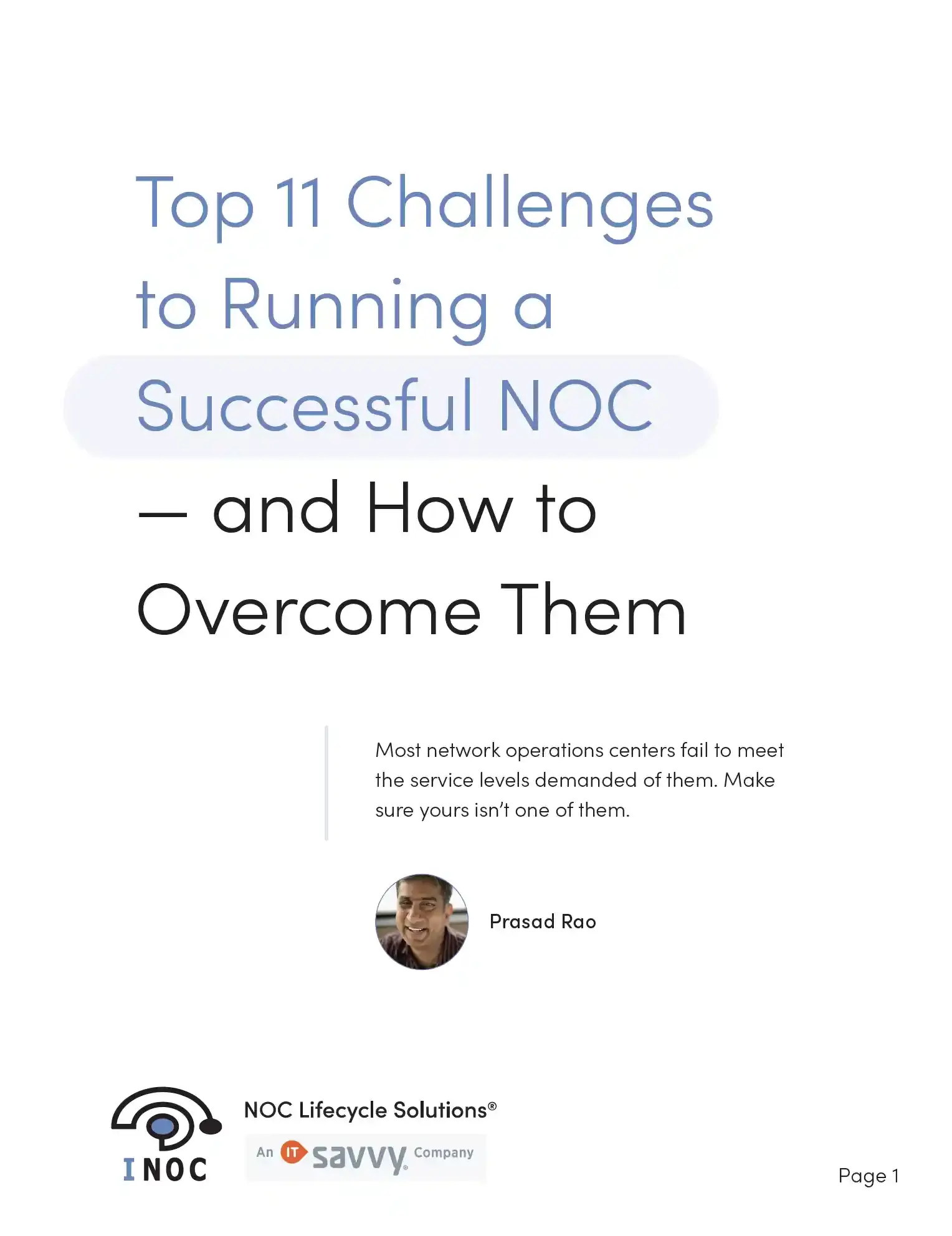
Free white paper Top 11 Challenges to Running a Successful NOC — and How to Solve Them
Download our free white paper and learn how to overcome the top challenges in running a successful NOC.






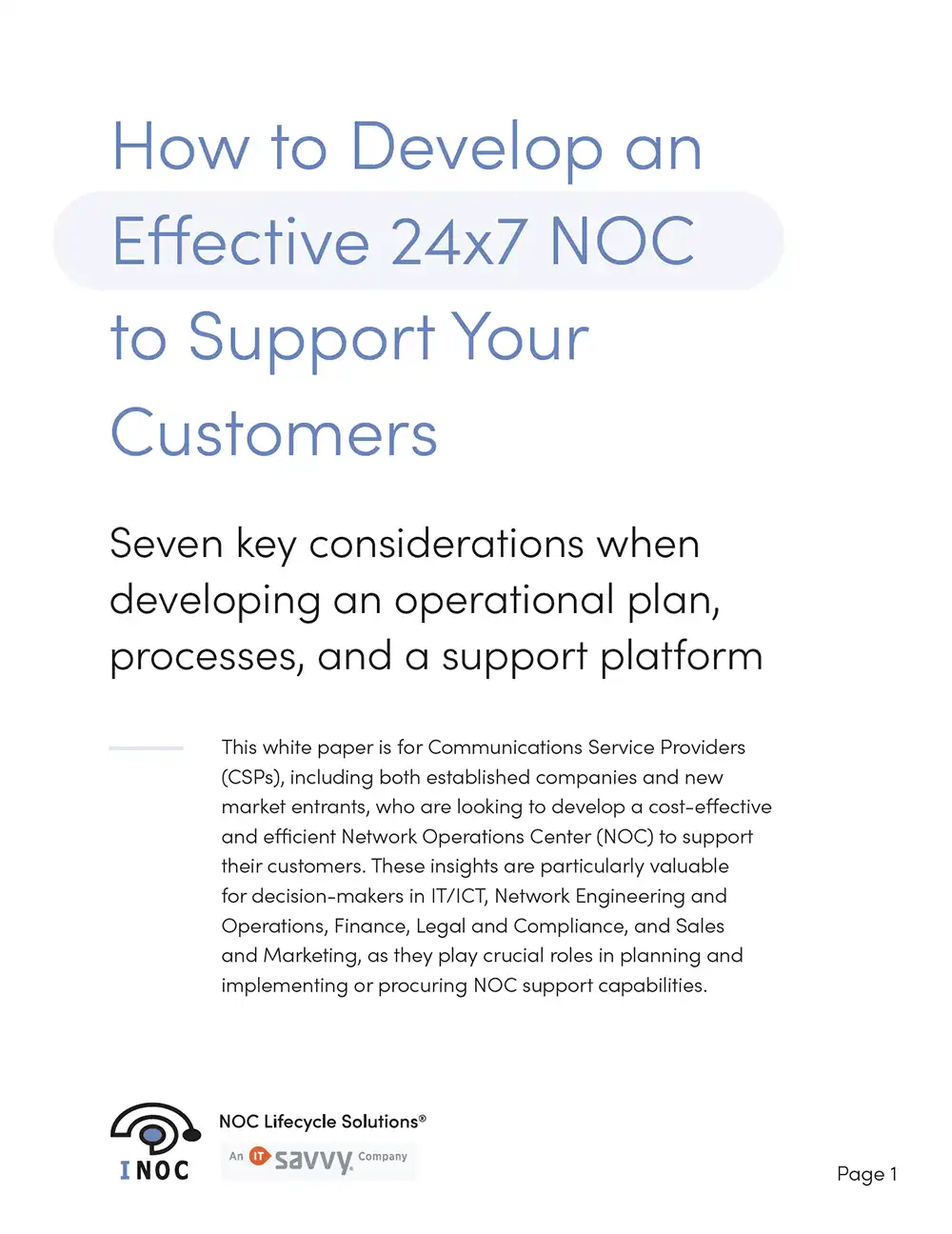

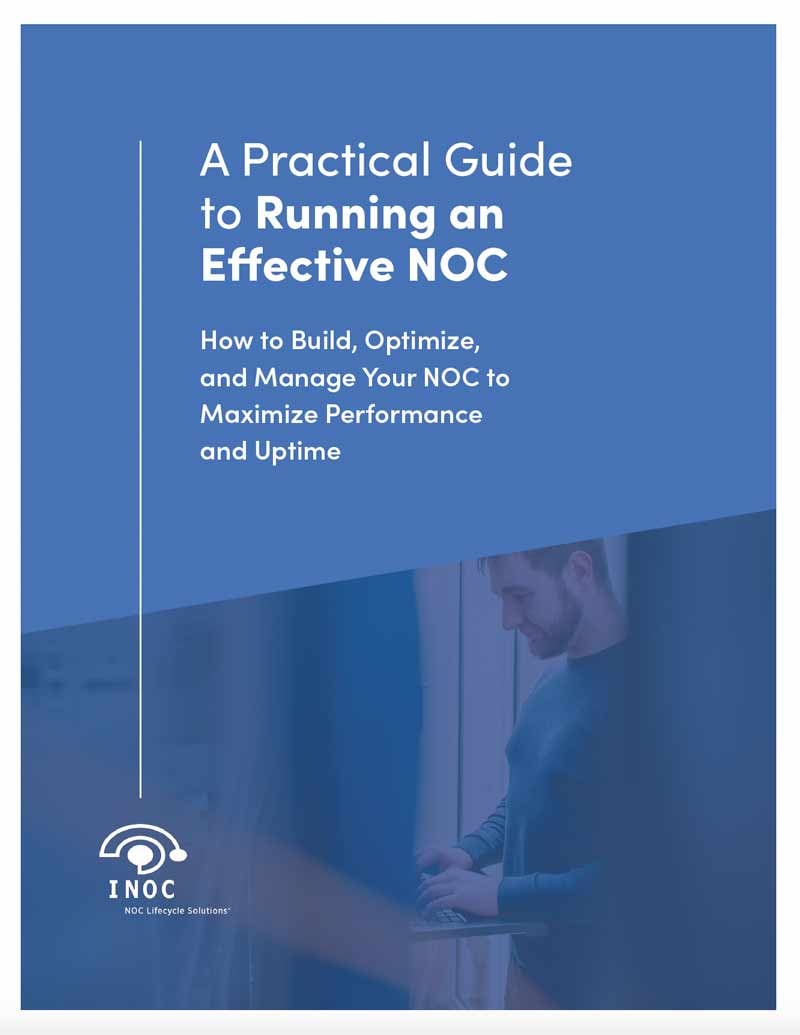
-images-0.jpg?height=2000&name=ino-WP-NOCPerformanceMetrics-01%20(1)-images-0.jpg)



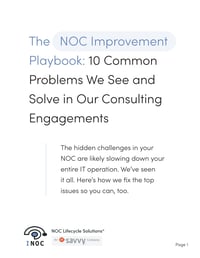

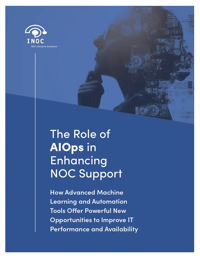

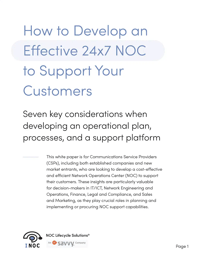
-images-0.jpg?width=200&height=259&name=ino-WP-NOCPerformanceMetrics-01%20(1)-images-0.jpg)